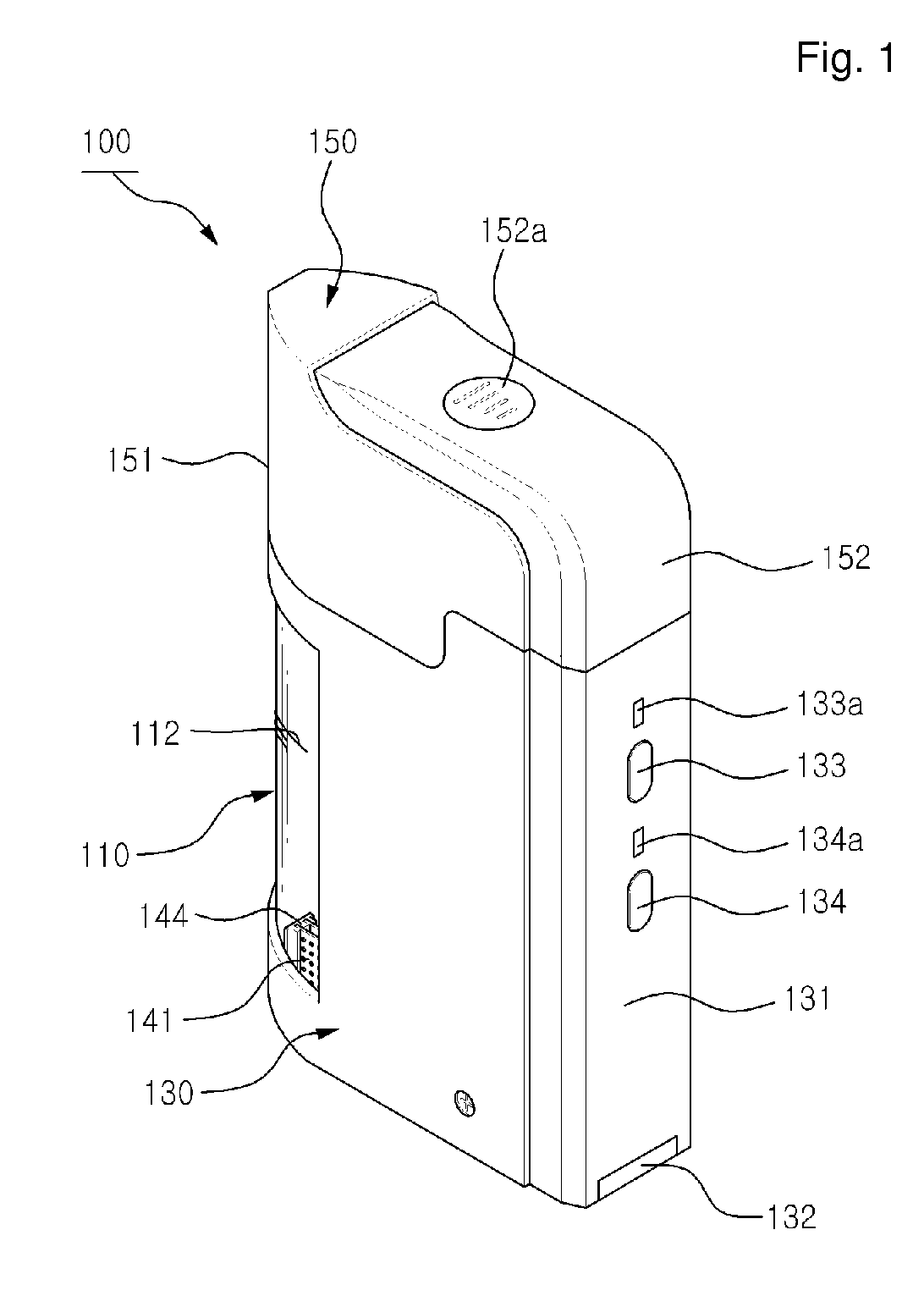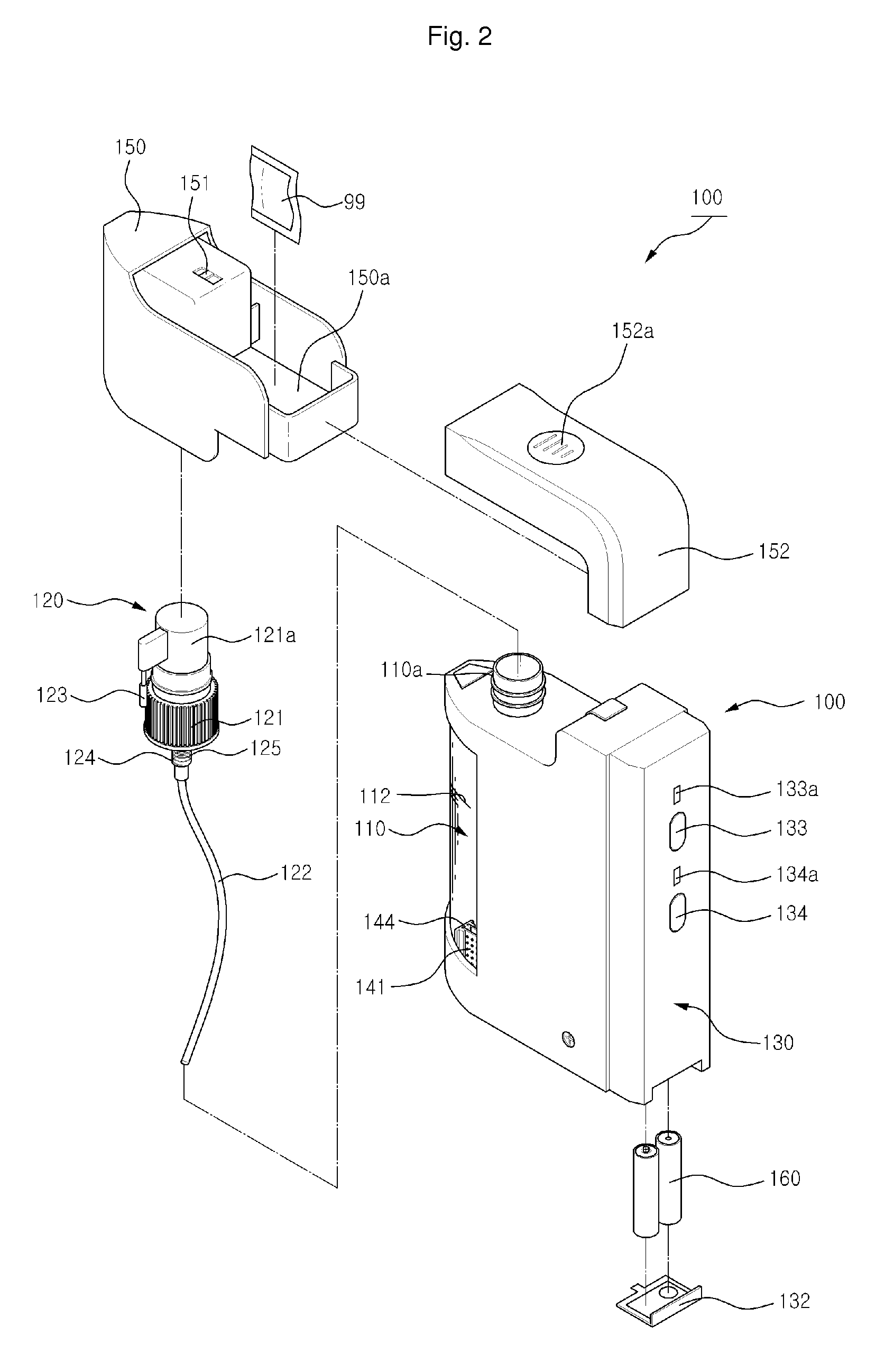Manufacturing method of medical sterilized isotonic solution having low-concentratedly controlled free chlorine including hypochlorous acid therein
a technology of isotonic solution and manufacturing method, which is applied in the direction of disinfection, inorganic non-active ingredients, separation processes, etc., can solve the problems of difficult to realize the targeted concentration of hocl by electrolysis, the solution with unlimitedly higher concentration of hocl would not be used for medical purposes, and the effect of effective sterilizing efficacy and stably and reliably obtained
- Summary
- Abstract
- Description
- Claims
- Application Information
AI Technical Summary
Benefits of technology
Problems solved by technology
Method used
Image
Examples
first embodiment
[0109]Hereinafter, the example of the sterilized normal saline in accordance with the present invention will be described.
1st embodiment
[0110]1st Embodiment
[0111]The electrodes 141,142 are formed of a plate-shape having its surface area of 1225 mm2 which are plated with platinum and arrayed apart by an interval d of 2 mm from each other and immersed in the normal saline of 100 ml having pH 6.45±0.2. Also, DC current is supplied to the electrodes 141, 142 for 20 seconds with periodically converting the direction of the DC current in every 5 seconds. The concentration of the free chlorines was measured for 5 times with respect to the voltage change as shown in the following Table-2.
[0112]
TABLE 2VoltageDCAverageStandard DeviationSupplyCurrentConcentrationof ConcentrationNo.(VDC)(mA)of Free chlorinesof Free chlorines1-12.2Not flow——1-22.4801.200.451-32.71602.100.711-43.32003.040.811-53.53505.811.241-64.55207.141.72
[0113]As shown in the experimental result Table-2, DC current cannot flow between the electrodes 141, 142 when DC 2.2V is supplied to the electrodes 141, 142, while average DC current of 80 mA flows between th...
2nd embodiment
[0114]2nd Embodiment
[0115]The width d1 of rods 241a, 242a of the electrodes 241,242 are formed of 0.7 mm, and the width d2 of slots 241b, 242b of the electrodes 241,242 are formed of 1.3 mm. The electrodes 241,242 are arrayed so that the negative rods 241a are positioned at right angle with the positive rods 242a. Each of the center areas including the domains (i.e., whole surface area of the rods and slots) surrounded by the x, y of FIG. 9 is 841 mm2 respectively and are plated by platinum, and the other surface areas (i.e., circumstance area 241b, 242b excluding the center area) of the electrodes 241, 242 are coated by insulating layer so as to prevent the electrolysis from occurring at the circumference areas 241b, 242b. The electrodes 241, 242 are arrayed apart by 2 mm from each other and immersed in the normal saline of 50 ml having pH 6.37±0.2. Also, DC current is supplied to the electrodes 241, 242 for 20 seconds with periodically converting the direction of the DC current in...
PUM
| Property | Measurement | Unit |
|---|---|---|
| pH | aaaaa | aaaaa |
| pH | aaaaa | aaaaa |
| half-life time | aaaaa | aaaaa |
Abstract
Description
Claims
Application Information
 Login to View More
Login to View More - R&D
- Intellectual Property
- Life Sciences
- Materials
- Tech Scout
- Unparalleled Data Quality
- Higher Quality Content
- 60% Fewer Hallucinations
Browse by: Latest US Patents, China's latest patents, Technical Efficacy Thesaurus, Application Domain, Technology Topic, Popular Technical Reports.
© 2025 PatSnap. All rights reserved.Legal|Privacy policy|Modern Slavery Act Transparency Statement|Sitemap|About US| Contact US: help@patsnap.com



